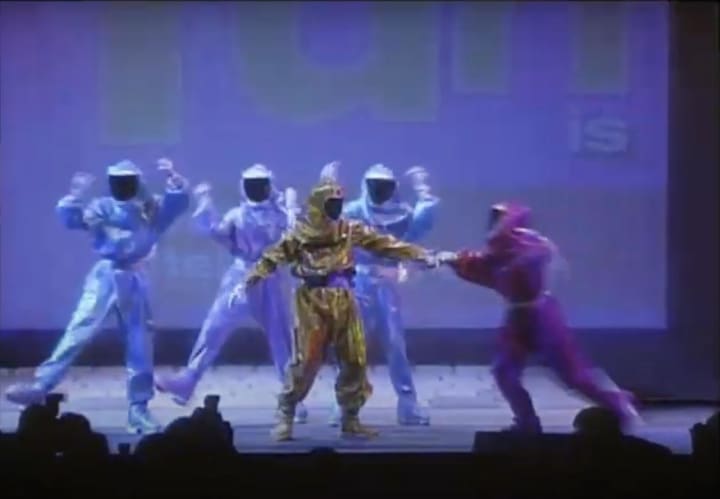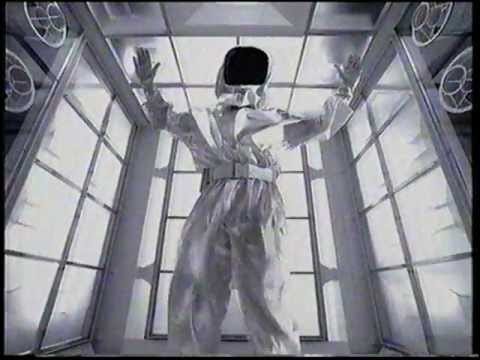We’ve just hit 3,000 subscribers. Thanks so much everyone! So to celebrate, and as we’re approaching Spring, this week’s post is a bit more light-hearted than usual.
This actually started as a technical post on Intel’s MMX Instruction set, but then I fell down a bit of a rabbit hole(!) When we emerge, there will be a (semi) serious point, I promise.
Intel launched the MMX ‘Multimedia Instruction Set Extensions’ in 1997. To advertise MMX they created a couple of TV ads featuring ‘Intel engineers’ in ‘bunny suits’ that aired during Super Bowl XXXI.
It features ‘Intel technicians’ in ‘bunny suits’ dancing whilst the VoiceOver says (as ‘Play That Funky Music’ is playing in the background):
Here, in the world’s most advanced manufacturing environment, Intel technicians are making Pentium processors. Nearby, other Intel technicians are adding something new. We call it MMX media enhancement technology. You’ll call it fun.
The second ad in the series is just as fun.
Let’s just pause for a moment to consider just how extraordinary this is. We’re taking about an instruction set extension, featuring as the centerpiece of Super Bowl advert!
In the earliest days of Intel, Fabs had some questionable standards of cleanliness:
a couple of people in Fab 1 got read the riot act … for bringing pizzas in and setting them on top of the diffusion furnaces to keep them warm.
That all changed in 1973 when the ‘bunny suit’ made its first appearance:
More rigorous clean suit protocols began at Intel with the opening of Fab 3 in Livermore, California, in 1973. Gene Flath, who managed wafer fabrication at the first three fabs, recalled the new coverall “bunny” suits receiving a lot of attention for their novelty: “People used to find excuses to visit Fab 3 just so they could put a bunny suit on.” The suits would gradually spread throughout Intel’s other facilities and become the companywide standard by 1980. Their design would be a continuous work in progress, always keeping pace with the increasing intricacy (and commensurately increasing needs for purity) of microprocessors.
Soon the bunny suit became part of Intel’s public image. After the Super Bowl ads, the bunny-suit dancers then travelled to New York to publicise the Pentium 2.
This was all consistent with Intel CEO’s Andy Grove’s strategy of building up the Pentium and associated brands. When the consumer went to buy a PC they should ask for one with a Pentium with MMX, not a Compaq or a Dell or other beige PC brand.
Grove himself would emerge onstage from a golden bunny suit.


Apple, never shy to tweak competitors noses, were then soon in on the bunny suit act, claiming that the PowerMac G3 could ‘toast’ the Pentium and showing a somewhat burnt bunny suit to prove it.
Of course, almost ten years later, Apple would switch to Intel processors, when it was clear that PowerPC processors really did consume a lot more power than their Intel competitors. It was natural then that Paul Otellini, then Intel’s CEO, would appear onstage, in his own bunny suit, to present Steve Jobs with a silicon wafer.
Of course, some of these representations of the bunny suit use a lot of artistic license. For a more realistic representation of what it’s like to put on and wear one, here is Dr Ian Cuttress.
At this point, we're going to take a brief diversion to highlight a couple of important posts from Dylan at
and Jon at.Both posts are very, very much worth watching or reading in full.
One central point made by both of these posts is that it will be hard (impossible) to build out semiconductor manufacturing if it’s impossible to recruit engineers to work in the industry. And based on recent evidence and experience that is a likely outcome.
Both posts highlight significant policy failings and some key actions to help deal with this problem. Unsurprisingly, some of these actions relate to STEM education and to making the industry more attractive to new entrants.
Now semiconductors are all over the news at the moment. But what’s the focus? Geopolitics. We have ‘Chip Wars’ which is a great book, but which is firmly focused on the coming battle between the US and China for dominance in semiconductors.
It’s interesting that the first comment in the
post above is from a retired engineer who states that they didn't want to work on military projects, in this instance specifically Star Wars in the 1980s. Geopolitical conflict really isn't a magnet to get people to work in any industry.Back to the original Bunny Suit ads. Now I happen to think that these ads were remarkable. They helped to create a direct link between semiconductor manufacturing and the product that customer’s use and enjoy. They shout (or rather dance): It’s semiconductors that make the cool stuff possible.
The underlying message is just as true today as it was in 1997. We all know that it’s no exaggeration that it’s the advances in semiconductor manufacturing that enables all the great new stuff that you get to do on your phone, tablet or PC. Without the work of those bunny-suited engineers, there would literally be nothing.
For a more subtle version of the message here is a Dutch TV documentary on ASML. I don’t think it’s too far-fetched to see this as an hour-long recruitment video for the company. In my view it’s very effective. And it has lots of bunny suits.
The title of this post is ‘Bring Back Bunny’. I’m not seriously suggesting that those dancing bunny suits should return to our TVs. Rather, that talk of geopolitical crisis or of problems in an industry doesn't get people interested in working there. Showing the value that people working in that industry create, does.
Making advanced semiconductors is about much more than geopolitical competition. It’s literally about creating the future. Who wouldn’t want to be involved in that?
With that message, the bunnies really should have a spring in their step.
And finally, just to remind us that men in white suits, doing amazing things, can be inspiring to a whole generation.
Thanks for subscribing to the Chip Letter. Normal service (with no 🐇👩🚀) will be resumed next time.









